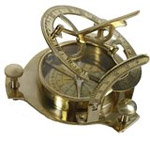Ship Captains: San Francisco 1800s
Captain David G. Farragut
The military history of Mare Island began on January 4, 1853 when the United States purchased the island for $83,491.
In September of 1854, Commander David Glasgow Farragut and his family arrived on the island and Mare Island became the first United States Naval Base on the West Coast. Arrived San Francisco on the SS Cortes, September 14, 1854

Capt. Farragut, U. S. N., Commander, who was sent from Washington to establish the Navy Yard at Mare Island in San Francisco, north-east of San Francisco (Image: Russian ships at Mare Island. Russian and American Navies date back more than 150 years, well before the American Civil War.) Farragut was to personally oversee the building of a Navy Yard in support of the Pacific Squadron. Farragut later became a naval hero and our nation’s first Admiral for his victories at New Orleans, Vicksburg, and finally his capture of Mobile Bay during the Civil War.

Although Farragut dreamed of building the first naval vessel to be constructed in the west, authorization for the ship was not received until after he left Mare Island in 1856. The USS Saginaw, a four-gun, wooden-hulled, steam-driven, side-paddle-wheel gunboat was launched March 3, 1859. The USS Saginaw was the first of over 500 ships built at Mare Island Naval Shipyard during its 142-year history. Mare Island illustrates the Nation's effort to extend its naval power into the Pacific Ocean. The first U.S. warship (1859) and first dry dock (1872-91) constructed on the West Coast were built at Mare Island.
The Captain was described as a "dapper little gentleman," but in spite of his slight figure, he had "presence." He had spent years sailing the world, and his face was weather-browned with the look of a "man who has seen many things."
As a boy of eleven, he had fought in a battle of the War of 1812, midshipman on the Essex when she was engaged by a British ship off the coast of Chile . . . When fighting began on the Essex, he stood waiting for orders at the foot of a companionway. Suddenly a wounded man toppled down the stairs, his blood pouring over the horrified boy. Farragut staggered away, ready to faint, but pulled himself together and got on deck; and presently, with men falling on every side, he became indifferent to blood and death and fought like a veteran.
In the evenings at White Sulphur, Captain Farragut proved to be a most meticulous dancer. Holding some tall and stately belle at arms' length, he would rhythmically rise and fall on his toes with each slow step, while they revolved in the old-fashioned waltz.
He was orderd East two years later as captain of the Brooklyn, one of the first U.S. Navy steam warships. After a two years' cruise on the Brooklyn, Farragut left the ship and went to Norfolk, Virginia.
A few months later the war between the North and the South broke out, and Farragut, who was born in the South, had to decide to side with the North or the South; his home at this time was in Norfolk, and most of his friends were Southerners.
Farragut and his Norfolk neighbors met daily and discussed the great questions before the country. He expressed his opinions fearlessly, but he soon saw that his friends did not agree with him. One day one of them said, "A person of your sentiments cannot live in Norfolk." "Very well," he replied, "I will go where I can live with such sentiments."
Farragut told his wife that she, too, would have to decide whether to stay with the South or to go with him. Together they left Norfolk and went to a little village on the Hudson River, called Hastings. The Government hesitated to trust a Southerner with a great responsibility, in spite of the fact that he had shown his loyalty again and again. But the North needed his skills and the decision to employ him on behalf of the North proved wise.
Captain Farragut's capture of New Orleans was the second great naval success to cheer the North. Coming, as it did, so soon after the repulse of the dreaded Merrimac by Lieutenant Worden in his little ironclad Monitor, it put new hope into every Northern soldier.
April 19, 1889, Daily Alta California, San Francisco
AFLOAT AND ASHORE. Commodore Benham Inspects the Charleston's Machinery. Three Little Stowaways Pound on the Steamer Farallon Number of Men at Mare Island
The number of men working on Mare Island on April 15th was as follows: Yards and docks, 111; construction and repairs, 306; steam engineering, 195; equipment and recruiting, 56; ordnance, 16; navigation, 4; provisions and clothing, 20; total, 708.

The Mexican gunboat Democrats, which has been in port about four months, has nearly completed her improvements and repairs and will leave for Guaymas next week. She has received a new armament since coining here and now carries two 100-pound guns, two 20 pounders and one Gatling gun. She has a crew of 125 men.
G. F. Lanteri, the boat-builder at Fisherman's Wharf, launched another large large coffee lighter yesterday afternoon. It is for Parrott & Co. and will go to San Jose de Guatemala. This lighter is the largest yet launched by Lanteri, being quite able to carry fifty tons. The dimensions are: Length 47 feet, beam 14 feet, depth of hold G feet G inches. She is of extra strong build and copper-bottomed.







 Copyright ~ 1998-2018.
Copyright ~ 1998-2018. 